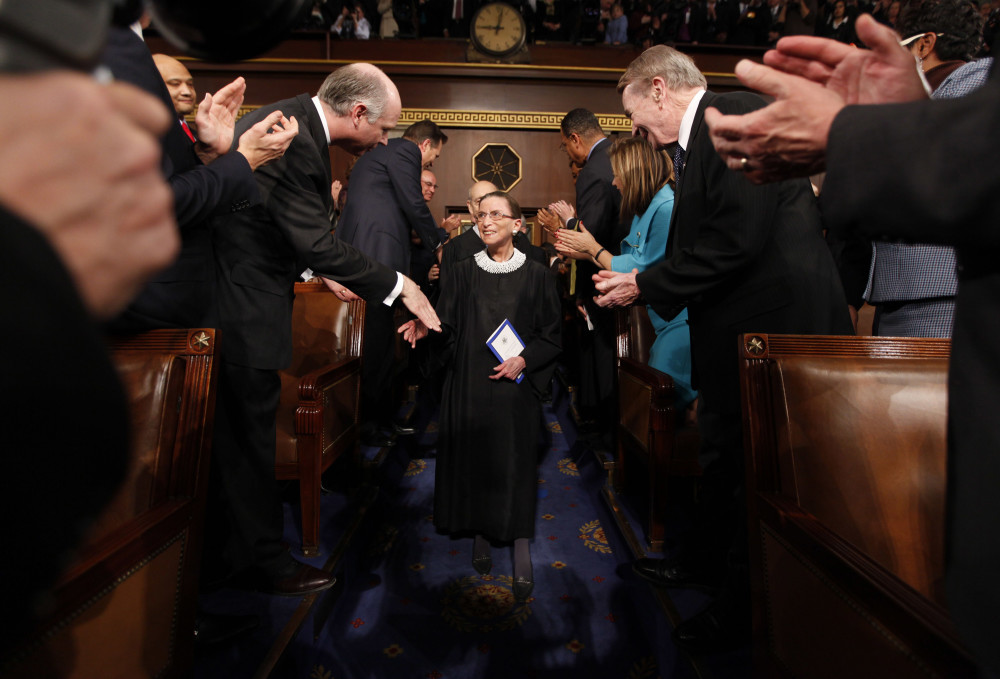By Bob Egelko
San Francisco Chronicle.
The U.S. Supreme Court is one-third female, an all-time high. California’s legal profession has also reached historic levels in gender diversity — nearly one-third of the state’s judges and 40 percent of its lawyers are women.
The state Supreme Court, all-male for its first 128 years, had a majority of female justices from 2011 through April 2014 and still is 50 percent women. The three-member commission that confirmed the latest nominee to the state’s high court, drawn from the top ranks of legal officials in California, consisted entirely of women.
So is it time to proclaim, in the words of a bygone cigarette commercial, “You’ve come a long way, baby”?
No way, says California’s chief justice.
If women make up 50 percent of the population, “then there should be 50 percent representation on the bench and in the (legal) profession,” Tani Cantil-Sakauye, the second woman to head the state Supreme Court and preside over the nation’s largest judicial system, said at a panel discussion in San Francisco last week.
When she was first appointed to the bench in 1963, said Joan Dempsey Klein, a state appeals court justice in Los Angeles who is now the state’s senior presiding appellate justice, “male lawyers would come in and call me ‘dearie’ and ‘honey.’ Anything but ‘Your Honor.'”
“Jurors were looking at me, like, ‘Are you a honey?’ It took us a long time to get some of those people up to speed.”
Calling timeout
Cantil-Sakauye, whose first judicial appointment was in Sacramento in 1990, said she learned how to deal with male lawyers who interrupted her — by calling timeout, summoning them to the bench, and reminding them, “I’m not your wife.”
Even now, “male lawyers tend to talk over me,” said the third panelist, U.S. District Judge Claudia Wilken of Oakland, chief judge of the Bay Area’s federal courts. “Societal attitudes still kick in a little.”
As some lawyers continue to describe their colleagues differently, Wilken said, “if it’s a man, he’s aggressive. If it’s a woman, she’s bossy. Men have a hard-fought argument … women a catfight.”
It’s the same phenomenon, the jurists said, that U.S. Supreme Court Justice Ruth Bader Ginsburg described in July, when she told an interviewer that the court’s five-man conservative majority had a “blind spot” when it came to discrimination against women.
She cited the 5-4 ruling in June that allowed some corporations to deny contraceptive coverage to female employees because of corporate owners’ religious objections.
Outside government circles, the top ranks of the legal profession remain male-dominated, said the panel’s moderator, Noreen Farrell, executive director of the nonprofit Equal Rights Advocates firm. According to a recent study of the nation’s 200 largest law firms, she said, 4 percent have women as managing partners.
“Big-time businesses don’t have the confidence in females as their attorneys as they do in men,” said Klein. Until women get their rightful place in a law firm’s corporate suites, with the same salaries, she said, “nothing will change.” And if she were a client choosing between a woman from a small law firm and a man from a megafirm, “I might go to the same place.”
Wilken said the outlook for equality is brighter in the judiciary, where about 40 percent of the nation’s 94 chief federal district judges are women. Cantil-Sakauye said the same holds true in the states’ highest courts: The nationwide Conference of Chief Justices, which had two women when it was founded in 1949, had 20 when she joined in January 2011, and has evolved from a social group to an advocacy organization.
buy forzest online www.mydentalplace.com/wp-content/themes/twentytwelve/inc/en/forzest.html no prescription
It’s not just a matter of numbers, Cantil-Sakauye said — female judges “know what (women appearing before them) go through … in their culture, as a mother.”
The 90-year-old Klein, founding president of both California Women Lawyers and the National Association of Women Judges, is retiring at the end of the year. Wilken, 65, a federal judge since 1993 and author of the recent ruling giving football and men’s basketball players a share of the NCAA’s commercial revenues, is stepping down as chief judge Dec. 31 and transferring to senior status, with a reduced caseload.
Some progress
All three were asked how far the legal profession has advanced on the road to equality. All gave similar answers — there’s been some progress but, as Cantil-Sakauye put it, “not nearly enough.”
None went as far as Ginsburg, who was asked in a National Public Radio interview last month how many women on the Supreme Court — an all-male institution until 1981 — would be “enough.”
“When there are nine,” she replied.














































































































































































































































































































































































